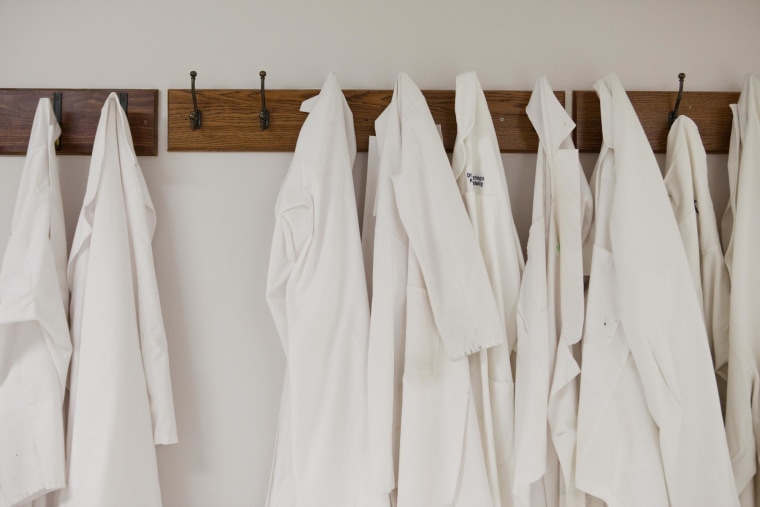
A new dress code for doctors, nurses and other health care workers calls for outfits that may be short on style, but long on what it takes to keep dangerous germs from spreading among patients.
Short sleeves, bare hands and forearms and white coats that are laundered at least once a week — if not more often — are the keys to keeping nasty bugs such as Staphylococcus aureus from hitching a ride on a doctor’s wrist.
Neckties are questionable. Watches and rings have to go. It’s not clear what to do about name tags, lanyards, necklaces and cell phones, but when it doubt, it’s best to clean the offending items — or get rid of them.
That’s according to new guidance on hospital attire released Monday by the Society for Healthcare Epidemiology of America, or SHEA. The group obsessed with stopping infections in hospitals and health care settings turned its attention to dozens of studies that suggest that grimy hospital garb might be responsible for spreading germs.
To be sure, no one has discovered a direct link between the germs on health worker clothing and actual infections, noted Dr. Gonzalo Bearman, a hospital epidemiologist with the Virginia Commonwealth University System and a member of the SHEA guidelines committee. But, he said, it makes sense that there would be a connection.
"There's a theoretical basis that if you have clean clothes, you have less chance of transmitting apathogen," he said.
SHEA members took a look at studies that have found a range of worrisome bugs, from Acinetobacter and Pseudomonas to Clostridium difficile, all detected on the sleeves, pockets and other sites of health care workers' coats and scrubs. One study found that a third of doctors’ neckties grew Staph aureus in the lab; several found that the germs detected were often resistant to the top drugs used to treat them.
SHEA members came up with the new recommendations, which also call for sturdy, closed-toe, non-skid shoes and for any clothes laundered at home to be washed with hot water and bleach. They didn't weigh in the question of whether hospital workers should wear scrubs in the subway, for instance.
The group is urging hospitals to consider the adopting the new guidelines, or to pay greater attention to them if they’re already in place. They’re also calling for more research to nail down exactly how hospital garb spreads infection, in hopes of recommending a health worker wardrobe that’s both stylish — and safe.
